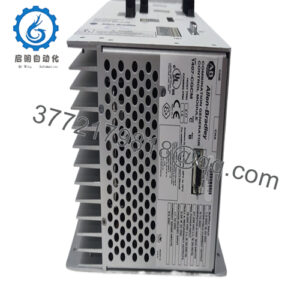Description
The SKF CMPT CTU is widely used in industrial automation environments focused on machinery fault detection. It is particularly applicable in control systems for rotating equipment such as fans, pumps, motors, and gearboxes where monitoring vibration and temperature is critical to prevent unexpected failures. The SKF CMPT CTU addresses common challenges in industrial settings including the early detection of looseness, unbalance, bearing faults, gear damage, and lubrication issues. It supports essential technical tasks like processing and analyzing vibration data through user-selectable methods such as acceleration enveloping, acceleration magnitude, and velocity measurements. These tasks help maintenance engineers and reliability teams gain insight into machine health, reduce downtime, and optimize maintenance schedules without invasive inspections.
Functioning as a vibration and temperature transmitter, the SKF CMPT CTU integrates seamlessly within larger control system architectures, particularly those leveraging PLCs or distributed control systems (DCS). It outputs analog signals proportional to processed vibration and temperature data, making it ideal for interfacing with SKF’s family of sensors or other compatible industrial accelerometers. Real-world use often sees this transmitter installed on machinery in manufacturing plants, power generation facilities, mining operations, and chemical processing environments. Its ability to monitor both high-speed and low-speed machinery speeds down to 20 revolutions per minute is vital for sectors reliant on precision machinery health monitoring.
The SKF CMPT CTU distinguishes itself by offering analog outputs for easy integration and a CAN-bus communication interface allowing multiple transmitters to be networked for remote diagnostics and configuration. Its front panel provides configurable options to tailor vibration signal processing according to specific monitoring needs. This product is designed to be rugged and modular, well-suited for industrial harsh conditions, and enhances reliability programs by delivering accurate, actionable vibration data for predictive maintenance practices.
The SKF CMPT CTU digital transmitter complements SKF’s broader Copperhead condition monitoring platform, serving as a critical node in advanced asset management systems used globally
The SKF CMPT CTU is a digital vibration and temperature transmitter module designed to perform real-time machinery fault detection. This device captures vibration signals through accelerometer sensors and converts these readings alongside temperature measurements into proportional analog outputs usable in industrial control systems like PLCs and DCS. As an integral part of SKF’s Copperhead condition monitoring system, the SKF CMPT CTU acts as a critical interface unit, transmitting processed vibration data and temperature conditions for machinery health assessment.
- CMPT CTU
It supports three user-selectable modes of vibration analysis: acceleration enveloping (gE), standard acceleration (g), and velocity (mm/s or inch/s). This versatility allows engineers to tailor monitoring parameters based on the specific machine and fault signatures of interest, such as impacts from loose components or overall vibration trends related to imbalance or misalignment. Physically, the SKF CMPT CTU mounts on a standard 35 mm DIN rail and offers a rugged enclosure suitable for industrial environments.
Designed for system integrators and maintenance specialists, the SKF CMPT CTU fits within broader condition monitoring strategies by delivering reliable signal processing and communication options. Its analog and CAN-bus outputs enable straightforward integration into automation architectures and centralized monitoring platforms, helping engineers implement predictive maintenance workflows with confidence. The module’s configurability directly from the front panel ensures tailored deployment without complex programming, enhancing field usability. The proven compatibility with a variety of accelerometers and the established SKF Copperhead ecosystem positions the SKF CMPT CTU as a versatile and valuable module within modern industrial asset management systems.
The SKF CMPT CTU excels with a range of technical features driving its strong performance in industrial vibration and temperature monitoring applications. It provides precise signal processing, including three distinct vibration analyses: acceleration enveloping detects intermittent impacts; acceleration tracks overall dynamic forces; and velocity highlights levels of machinery looseness and imbalance. This multi-modal capability makes it ideal for diagnosing diverse mechanical faults early and accurately.
Hardware-wise, the SKF CMPT CTU boasts a compact and sturdy design, fitting on a standard DIN rail within control cabinets. It includes a front panel BNC connector for buffered vibration and temperature signals, plus indicators for sensor status and overload detection—critical for reliable operation in heavy industrial settings. The module integrates an internal isolated DC/DC converter that protects against grounding loops and reverse polarity, enhancing operational robustness.
Its communication versatility is a standout feature. The analog outputs supply vibration and temperature data compatible with PLCs and distributed control systems, while the CAN-bus interface supports connections of multiple transmitters in series, enabling remote configuration and monitoring. This flexibility significantly reduces installation complexity and wiring costs. The device supports accelerometers with sensitivity ranging from 10 to 230 mV/g, accommodating a wide range of sensor types.
Long-term reliability is ensured by design choices that facilitate stable operation across temperatures from 0 to 70 °C and comply with industrial vibration and shock standards. The SKF CMPT CTU’s efficient power use and optional auxiliary outputs also make it a practical choice for comprehensive condition monitoring setups that demand durability and precise fault detection
| Parameter | Value |
|---|---|
| Model | SKF CMPT CTU |
| Brand | SKF |
| Product Type | Vibration and Temperature Transmitter Module |
| Power Supply | 24 V DC (22 to 28 V DC) |
| Operating Temperature | 0 to 70 °C (32 to 160 °F) |
| Mounting | 35 mm DIN rail, EN50022 compliant with steel retainer clip |
| Dimensions (HxWxD) | 75 x 45 x 118 mm (2.95 x 1.77 x 4.65 inches) |
| Weight | 0.225 kg (0.102 lbs) |
| Interfaces | Analog output, CAN-bus |
| Certifications | IEC vibration and shock standards compliant (IEC68-2 series) |
| Cooling | Passive (thermoplastic ABS enclosure) |
| Environmental Rating | IP20 |
Related Modules or Compatible Units:
- SKF CMPT DCL – Alarm and display monitor compatible with CMPT CTU for real-time fault alerting.
- SKF CMPT CVD – Vibration sensor that pairs with the CMPT CTU for sensing vibration signals.
- SKF CMPT PDA – Data acquisition unit complementing the transmitter for detailed machinery condition monitoring.
- SKF CMPT CAN – Interface converter enabling expanded CAN-bus integration for multiple transmitters.
- SKF CMPT PPU – Portable condition monitoring tool often used alongside the CMPT CTU in inspections.
- SKF CPHD CTU – An earlier version of the transmitter module with similar vibration analysis capabilities but fewer configuration options.
- SKF CMPT VRT – Vibration sensor module designed for specialized vibration measurement in harsher environments.
Installation Tips and Maintenance:
Before installing the SKF CMPT CTU, ensure that the control cabinet has adequate space for the DIN rail module plus clearance for wiring and heat dissipation. Correct grounding and shielding practices are essential to minimize electrical noise, which can affect signal accuracy. Keep the environment within the specified temperature range and maintain protection against dust and moisture since the unit is rated IP20 and not fully sealed against harsh conditions.
For maintenance, regularly inspect sensor connections and wiring integrity to catch any loose or damaged cables that might introduce noise or signal loss. Monitor the sensor OK and overload indicator lamps for early signs of hardware issues. Periodic functional checks of vibration signal outputs through the automation system help validate ongoing performance. Firmware updates, where applicable, should be applied to keep the module compatible with evolving control system protocols and expanded features.

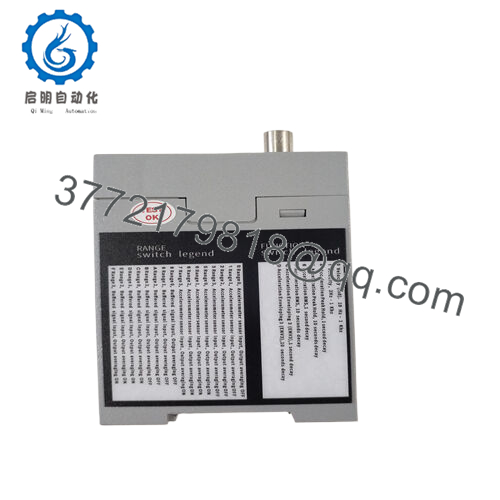

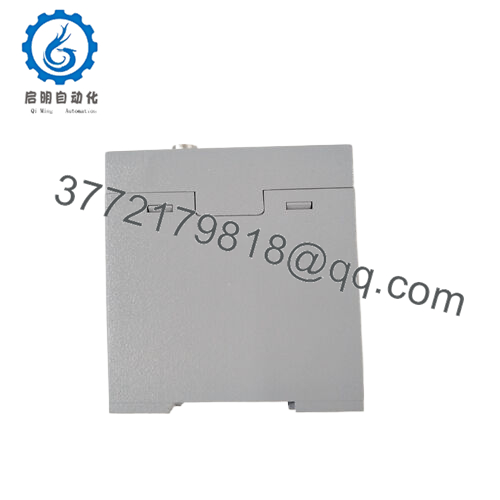
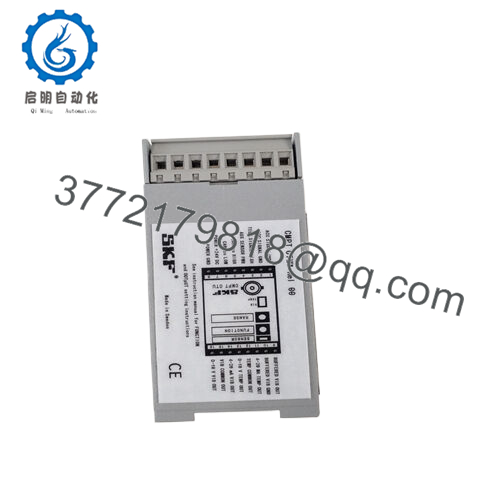
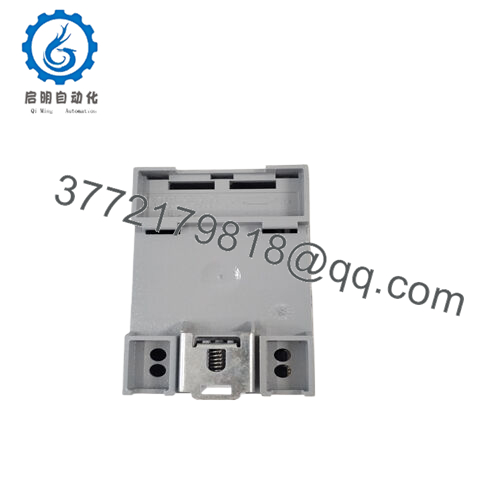
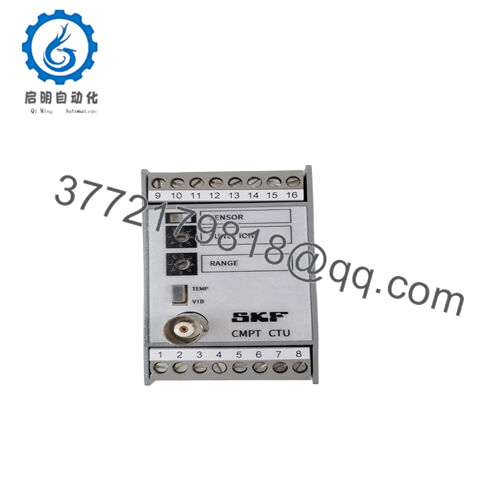
 WhatsApp: +86 16626708626
WhatsApp: +86 16626708626 Email:
Email:  Phone: +86 16626708626
Phone: +86 16626708626
